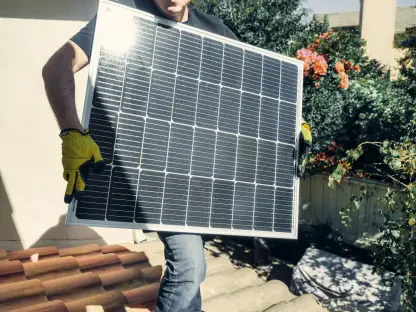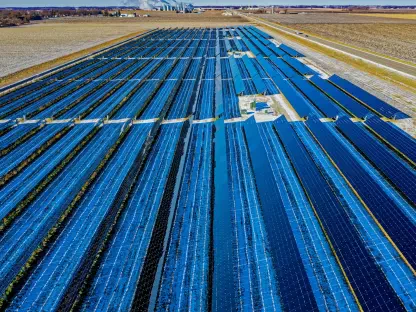Vietnam has taken a significant step towards advancing its renewable energy goals by approving substantial revisions to the National Power Development Plan for 2021-2030, with a vision extending to 2050. Deputy Prime Minister Bui Thanh Son formalized these changes through Decision No. 768/QD-TTg, solidifying the country’s commitment to expanding its power generation capacity. The revised plan, known as PDP8, signals an ambitious increase in installed power generation capacity, aiming for between 183,291 to 236,363 megawatts by 2030. This represents a notable rise from the previously approved capacity of 150,489 megawatts, reflecting a 30-50% increase within the decade.
Renewable Energy Enhancements
The plan places a strong emphasis on renewable energy, with ambitious upward adjustments to development targets. Onshore and nearshore wind capacity forecasts have been revised to 20,066-38,029 megawatts, substantially higher than previous estimates. Offshore wind capacity has seen a threefold increase, now projected at 17,032 megawatts, up from the earlier 6,000 megawatts. This increase will be subject to feasibility assessments and costs spanning from 2030 to 2035. Additionally, solar power capacity targets have surged to 46,459-73,416 megawatts, more than doubling earlier projections. Biomass and waste-to-energy sources have also seen upward revisions, reaching 1,523-2,699 megawatts and 1,441-2,137 megawatts, respectively. Meanwhile, hydropower will be optimized within practical limits, aiming for 33,294-34,667 megawatts by 2030.
Nuclear power is making a comeback in the revised plan with preliminary targets set for 4,000-6,400 megawatts by 2030-2035 and long-term aspirations of attaining 10,500-14,000 megawatts by 2050. This move underscores the government’s focus on diversifying the energy mix to ensure stability and sustainability. Development of storage solutions has been highlighted, specifically in pumped storage hydropower plants expected to reach 2,400-6,000 megawatts by 2030, and 20,691-21,327 megawatts by 2050. Distributed battery storage systems situated near solar, wind, or significant demand centers are anticipated to grow, targeting 10,000-16,300 megawatts by 2030 and reaching almost 96,000 megawatts by 2050.
Strategic Role of LNG and Energy Imports
Liquefied Natural Gas (LNG) is set to assume a central role, with a projected capacity of 22,524 megawatts by 2030. Domestically sourced gas power will continue to maintain its presence with an expected capacity ranging between 10,861-14,930 megawatts. Some LNG plants may transition to hydrogen co-firing or incorporate carbon capture and storage technologies in the future. In an effort to phase out coal, no new coal power projects will be approved after 2030, with existing capacity gradually being converted to biomass or ammonia by 2050.
Electricity export strategies have been incorporated into the revised plan, targeting 400 megawatts to be exported to Cambodia by 2030, with an expansion to include regional partners by 2035. Concurrently, electricity imports from neighboring countries such as Laos and China are expected to reach 9,360-12,100 megawatts by 2030. This approach ensures a balanced and secure energy supply for the country, while fostering international energy cooperation.
Long-term Outlook and Implementation
By 2050, Vietnam’s total installed power generation capacity is projected to escalate to between 774,503 and 838,681 megawatts. Renewable energy sources will become the cornerstone of the power system, with solar power capacity anticipated to reach 293,088-295,646 megawatts. Offshore wind and onshore wind capacities are expected to reach 113,503-139,079 megawatts and 84,696-91,400 megawatts, respectively. Battery storage is set to account for 11.5-12.4% of total capacity, ensuring energy reliability. Nuclear energy, with a stable base load, is anticipated to contribute 10,500-14,000 megawatts.
The plan also encourages the implementation of direct power purchase agreements (DPPA) and the production of emerging energy sources. These measures aim to contribute 30-60% of renewable energy output, contingent upon market demand and infrastructure developments. The guiding principles of PDP8 emphasize regional balance, system feasibility, and safety, aligned with sustainable economic growth, energy security, and national defense objectives.
Ongoing Review and Adaptation
Vietnam has made a significant advancement in its renewable energy initiatives by approving major changes to the National Power Development Plan for 2021-2030, with projections extending to 2050. These revisions, approved through Decision No. 768/QD-TTg by Deputy Prime Minister Bui Thanh Son, underscore the nation’s dedication to enhancing its power generation capabilities. The updated plan, referred to as PDP8, aims for an ambitious boost in installed power generation capacity, targeting between 183,291 to 236,363 megawatts by 2030. This is a considerable increase from the previously sanctioned capacity of 150,489 megawatts, marking a 30-50% rise within the decade. With this new plan, Vietnam is poised to significantly increase its renewable energy output, reflecting a proactive approach to sustainable development. This move aligns with global trends prioritizing greener energy sources, thus reinforcing Vietnam’s role in the international effort to combat climate change and reduce reliance on fossil fuels.









